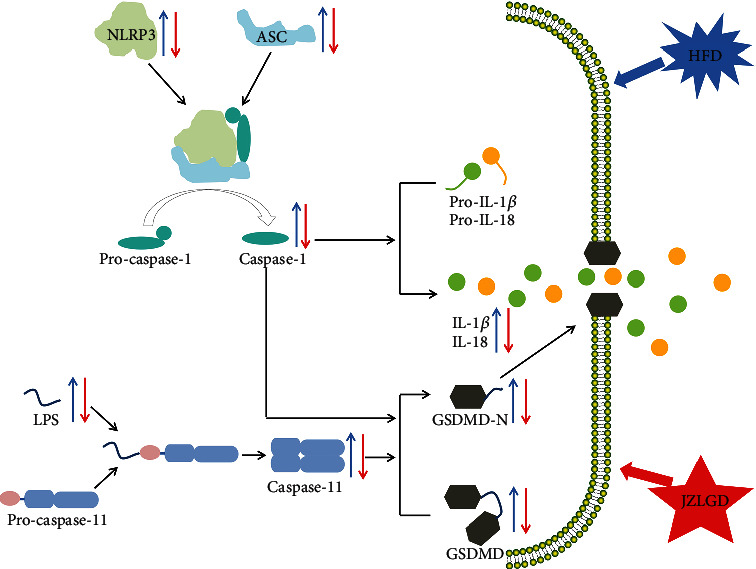Figure 6.

Graphical representation of the mechanism of action of GSDMD. During the process of pyroptosis, NLRP3 combines with ASC and the cysteine protease pro-caspase-1 to form inflammasomes. Inflammasomes can cleave pro-caspase-1, producing mature caspase-1. Mature caspase-1 can directly cleave pro-IL-1β and pro-IL-18 to generate the mature cytokines IL-1β and IL-18. In addition, LPS can directly bind to pro-caspase-11 and activate it. GSDMD is the executive molecule of pyroptosis and can be cleaved by activated caspase-1 and caspase-11. GSDMD-N then oligomerizes in the plasma membrane to form pores that increase membrane permeability, leading to IL-18 and IL-1β release, which mediates inflammation and pyroptosis. In the present study, 18 weeks of HFD led to some adverse consequences, such as weight gain, an increased liver index, higher blood lipid levels, pathological morphology, and inflammation of liver tissue in rats. It also led to an increase in NLRP3, ASC, caspase-1, LPS, caspase-11, GSDMD, GSDMD-N, IL-1β, and IL-18 levels. JZLGD treatment improved the above indicators and downregulated the expression levels of NLRP3, ASC, caspase-1, LPS, caspase-11, GSDMD, GSDMD-N, IL-1β, and IL-18.
